Pass Your Amazon AWS Certified Solutions Architect - Associate SAA-C02 Exam Easy!
100% Real Amazon AWS Certified Solutions Architect - Associate SAA-C02 Exam Questions & Answers, Accurate & Verified By IT Experts
Instant Download, Free Fast Updates, 99.6% Pass Rate
Amazon AWS Certified Solutions Architect - Associate SAA-C02 Practice Test Questions in VCE Format
| File | Votes | Size | Date |
|---|---|---|---|
File Amazon.practicetest.AWS Certified Solutions Architect - Associate SAA-C02.v2022-08-18.by.ellis.344q.vce |
Votes 2 |
Size 4.74 MB |
Date Aug 18, 2022 |
File Amazon.practiceexam.AWS Certified Solutions Architect - Associate SAA-C02.v2020-08-11.by.tommy.64q.vce |
Votes 3 |
Size 288.96 KB |
Date Aug 11, 2020 |
Amazon AWS Certified Solutions Architect - Associate SAA-C02 Practice Test Questions, Exam Dumps
Amazon AWS Certified Solutions Architect - Associate SAA-C02 AWS Certified Solutions Architect - Associate SAA-C02 exam dumps vce, practice test questions, study guide & video training course to study and pass quickly and easily. Amazon AWS Certified Solutions Architect - Associate SAA-C02 AWS Certified Solutions Architect - Associate SAA-C02 exam dumps & practice test questions and answers. You need avanset vce exam simulator in order to study the Amazon AWS Certified Solutions Architect - Associate SAA-C02 certification exam dumps & Amazon AWS Certified Solutions Architect - Associate SAA-C02 practice test questions in vce format.
AWS Fundamentals: IAM & EC2
17. Spot Instances & Spot Fleet
Okay, so let's do a deep dive on easy-to-spot instances. So we know that the spot instance offers a discount of up to when compared to on demand. So that's huge cost saving. And so how does that work? We define a maximum spot price that we're going to pay for that spot instance, and then as long as the instance has a spot price that is less than the maximum price we are willing to pay, then we keep that instance. So, in the next slide, I'll show you the maximum spot price. But the hourly spot will vary based on offering capacity, and so it will go up and down. And if somehow the current spot price goes over the maximum price you have defined, then you have two options. And for these two options, you have a two-minute grace period. So that gives you a lot of time to do these things. And the options can be either that you're stopping your instance, which means that you shut down everything you were doing, or that you're just stopping your instance. And so if one day the spot price goes below your max price, you can restart your instance and continue where you left it off, or if you don't need the state on your EC2 instance, you can just choose to terminate your instance and let it go. And then I would assume that any time you restart your work, you can start with a fresh new EC-2 instance. So there are two strategies based on the type of workload you have, but you only have a two-minute grade period to do it in. So the other strategy, if you don't want your spot instance to be reclaimed by AWS, is to use a spot block. And the spot block is when you block a spot instance for a specified time frame; this can be between one and six hours, and you get that block without any interruption, at least on paper because it's in the documentation, but it's really rare. In rare situations, the incident may be reclaimed, but overall, when you consider a spot block, think that the instance will not be reclaimed. That's the whole purpose of the spot block. So when do we use spot instances where batch jobs or data analysis workloads are resolving to failures, and as I said, they're not great for critical jobs or databases? Now let's have a look at the spot instance pricing. So this is a graph that I obtained directly from the AWS console. And as you can see here, this gives us the price for a large instance over three months in the spot zone. As you can see, there are six lines for us east one, a one, sorry, the region, and six availability zones. So six prices. So, as you can see, the spot prices vary based on the AZ you're considering. And so, as we can see, over the last three months, it has varied quite a bit. For example, if you look at that yellow line, it has varied from zero-four to 00:45, all the way down to almost 00:35, let's say. And so on. And so let's assume that we are defining a user-defined maximum price to be this black horizontal bar with a dotted line, okay? And so what we see is that if the yellow line is above the dotted line, then the current spot price is going to be more than the max price we have defined. And so in this instance, right here, we're going to lose our Spot instance. So we have to terminate it or stop it. But if the price goes down, so if the yellow line goes below our dotted line, that means that we are willing to pay that price. In the meantime, we're gaining that spot instance. So this is how we can optimise the cost of our workload very easily. And so, as you can see, the on-demand price is zero dollars per hour. So it's really, really cheap. Then there's the Spot instance price, which is even lower. It's around zero-four, I would say. In that case, the Spot instance pricing represents a 60% savings. So lots of savings And obviously, if you were to define your user-defined max price to be something like $0.05 per hour, then no spot instances would be reclaimed because you're always willing to pay more than the actual spot instance price. So no one can predict how the price changes over time. But as you can see, it can be rather stable. It can fluctuate a little bit, but overall, it still provides you huge savings compared to on demand.Okay? Okay. Next, how do you terminate a Spot instance? So we have to first understand how a spot request works. And so for this, let's consider a spot request. So with the spot request, you are defining how many instances you want, your maximum price you're going to pay, the launch specification, the AMI, and so on. And if your request is valid from and until infinity, then the request type. And it's very important to understand that there are two types of requests you can make. one-time request for spot instances or a persistent request for post instances. So let's have a look at the difference. So if it's a one-time request, as soon as your Spot request is fulfilled, your instances are going to be launched, and then your Spot request will go away because it was a one-time request type. So in this case, your Spot request is going to go away, and you're fine. However, if it is a persistent request type, we want this number of instances to be valid as long as the spot request is valid from to. That means that if somehow your instances do get stopped or interrupted based on the spot price, then your spot request will go back into action and, when things can be validated, will restart spot instances for you. So if somehow you stop a Spot instance in persistent mode and your Spot Request is still active, your Spot Request will automatically be smart enough to restart and launch an instance for you. And this is something you can also see in this diagram, but I won't spend too much time on it. So what you understand from it is that if you want to cancel a spot request, it needs to be in the open state, the active state, or the disabled state. That means that, basically, it's not failed, it's not canceled, or it's not closed. Okay? And when you want to cancel a spot request, if you take the spot request on the left-hand side and you cancel it, it's not going to terminate any instances that you have launched before. So it is still your responsibility to terminate these instances and not the responsibility of AWS. So as such, if you want to terminate Spot Instances for good and not have them relaunch, you first need to cancel the Spot Request, and then you need to terminate the associated Spot Instances. Because if you were to terminate the Spot Instances first, remember that it goes back into the Spot Request, and the Spot Request says, "Okay, you wanted six instances, but I can see you have zero right now. I'm going to launch six instances for you." So again, the right order to cancel and terminate Spot Instances is to first cancel the Spot Request to make sure that no new instances will be launched by AWS, and then you terminate the associated Spot Instances. And I'm spending a bit of time on this because this is something that can come up in the exam. OK. Next spot: fleets. So this is the ultimate way to save money. So spot fleets are going to be a way to define for you how to get a set of spot instances and optionally on-demand instances; that's what it's called, a fleet. And the Spot Fleet will try its best to meet the target capacity with the price constraints you've defined. so it will launch from possible launch pools. So you can have different instance types and different OSes and availability zones. And so you're going to define multiple launch pools. So there are multiple instances of everything. And then the fleet will choose the best, most appropriate launch pool for you. And when your Spot Fleet either reaches your budget or reaches the capacity you wanted, then it will stop launching instances. And so you define a strategy to allocate spot instances in your spot fleet, and that's something to remember. The first one is lowest price, and that's going to be the most popular one going into the exam, which is that the Spot Fleet will launch instances from the pool that has the lowest price, and that gives you a lot of cost optimization, and this is a great option if you have a very short workload. You can also have a diversified way to launch your Spot instances, in which case the Spot instances will be distributed across all the pools that you have defined before. which is great for availability and long workloads because if one pool goes away, Then your other pools are still active, and finally you have capacity optimised to launch with the optimal capacity based on the number of instances and choose the right pool for that. So the idea is that Spot Fleets can be complicated, but what you have to remember is that using the Spot Fleet, you're able to define multiple launch pools and multiple instance types, and so you're just interested in raw power. And then if you use the "lowest priced" strategy for spot fleets, they will automatically request the spot instances with the lowest price for us. And so Spot Fleet gives us an extra saving based on Spot instances because it's smart enough to choose the right Spot instance pool to allow us to get the maximum amount of savings. And this is the benefit of spot fleets. And again, you need to understand the difference between doing a very simple spot instance request where you know exactly the type of instance you want and the AZ you want to use, using the spot fleet, and saying OK, you can choose all these instances and in all these AZ, and what I need from you is to give me the lowest price, for example. Okay? So that hopefully gives you a lot of insight into how spot fleets and spot instances are different. I hope you like this lecture, and I will see you in the next lecture.
18. EC2 Instances Launch Types Hands On
Have a look at all the instance launch types; they're all on the left hand side here, and if we do launch an instance, that would be an on-demand instance by default, right? But let's have a look at all the things we just saw, so the first one we're going to look at is reserved instances, and so this is for instances that we want to reserve in time, for example. Let's say I want an M-5 largeA with a term of twelve to 36 months, and I'll just click on Search and, voila, we get some information to reserve the instance for 36 months with no upfront payment. We can pay a portion or the entire amount upfront, and we can choose how many we want, for example, one. Two or three, and then we can add to the cart for examples and say okay. I want this one. I want one and I'll add it to Cart and now I have to pay $1,089 so obviously I won't do this but this will show us how to use a reserved instance and reserve that capacity upfront so I cancel it then we have scheduled instances and so these are only available in some select regions so maybe if you don't see it that's because you're in the wrong region. Tomorrow and we say daily for 4 hours, and we can tell how many hours we want a day, so running Linux on any AZ for 4 hours a day is what it means. any instance type. Click on "Find Schedule" and we don't have anything right. It appears that booking these is difficult, but it simply shows that for schedule reserve instances, you set up a recurring schedule daily. Weekly. Monthly you see how many hours a day. How many hours a week or howmany hours a month you want. If you have any available slots when you want to start the platform and the type of instance you want, you can book them. Okay? So the next thing we have is a dedicated host. So Dedicated Host is going to be around, and that will give you access to how many sockets and cores are installed on the server. They're great when you want to bring your own license. So this is the kind of scenario in this case, okay? We click on Allocated Host, which chooses the instance family M5D do we want to enable multiple instance types or not? Then the instance type we want, so M5D large theAZ whether or not we want instance auto placement or host recovery, and then you click Allocate Host, which will go ahead and create a dedicated host for you and you can begin building for it. So I'm not going to click on AllocateHost, otherwise it will start paying some money. But it gives you an idea of what's here. Using a dedicated host, we specify what we need and we get it right away. Okay, next we're going to have spot requests, and spot requests are extremely interesting. So here we can request Spot instances two ways: either through this button right here or through the instance launch. So we'll see both in a second. So the first one is going to be the one requesting the Spot instance. So I ask for a spot instance. And by the way, just before I do that, I want to show you something else in the pricing history. You can see the spot price history. For example, if we take M for large and give it a date range of one week, we can see that the price range is actually very, very stable. So this is just a really good trick. Spot prices don't vary in price so much; they're actually quite stable, and I found them to be quite a stable way of using them. But from an exam perspective, remember that Spot instances can be reclaimed by AWS at any time, so they make it less stable from an exam perspective. OK, but as you can see, the on-demand price is zero point eleven and the actual price is zero point 34, which is extremely cheap. So you have very good savings, and they're restable in time if you use Spot instances. Okay? Okay, let's get back to requesting spot instances. So here we have the option to define aSpot instance based on a type of workload. So it could be a load-balancing workload if you want to have a web service. a flexible workload if you run one batch job. If you want to launch many, it's a big data job. Many types of instances of any size torun some computations or define direction workflows. which is a spot block where you say, I want to book a spot instance between one and six hours. Okay? And so for each type of Spot instance request, you have to specify the AMIID, the network AZ, the key pair, and so on. And then you tell us how much capacity you need. So, for example, you might say I need one instance or six instances, which can be instances or vCPUs, or virtual cores, and then whether we want to keep the target capacity, and so on. And then finally, here's the fleet request. This is a fleet request, and it's saying okay, you need to book some C-4, C-3 large, some medium, C-2, and so on. But you can also just choose what you want in terms of instance types, allocation, and price, and then finally, do we want to have a capacity optimized? Do you want to have a diversified fleet or the lowest price? We have a lot of different things in your spot fleet, and then it gives you an estimated hourly price and says that at target capacity you have 72% savings, okay? That is when you want to request spot instances soit's a spot fleet but if you want to request justone spot instance you would go to the instances on theright hand side on left hand side sorry and you clickon launch instance and in here we're going to say AmazonLinux two and then I'm going to say I want aT two micro instance details and here in the purchasing optionsyou can request a spot instance it shows you the currentprice of a spot instance which is a lot less thanthe actual on demand price then we can set the maximumprice we want amount for that spot instance for example Iwill say zero six and that means I'm willing to paysix cents per hour maximum for that instance so currently Iwill be paying that current price but if it goes overmy maximum price then database will reclaim my instance that wesaw before is it a persistent request? So that means, what do you want to do when the instance is terminated? So do you want to terminate or stop? So we have different options, and then is my request valid at any time? So from a specific time to another specific time date?That is, for example, if you want to have that instance for a long time and you're very close to the current price. These options will be quite helpful OK.So I just cancelled it, and that's it. That will be all the ways to launch your instances, so that's quite a bit away, sorry. I just missed one, so obviously the dedicated instance So let's go back to our TT micro-instance. details, and at the bottom there's tenancy, and in the tenancy you can choose to run on shared hardware or dedicated hardware to have a dedicated instance, or you can run on the dedicated host that we launched previously to launch this instance on the dedicated host, and we get extra options on host and placement affinity. OK. Well, that's it for this lecture. We see all the instance types Remember, the exam will ask you to figure out from the case whether it is a database. Is this a Spot occurrence? Do we need a schedule reserve instance of that kind of thing to bring you the best cost savings and the most efficient workload while making sure you comply with all the requirements, for example, to be resilient to failures or to never have termination in place or to have some kind of licencing view? Okay, for this lecture I willsee you in the next lecture.
19. EC2 Instance Types Deep Dive
So on AWS: And for the exam, you kind of need to know the instance types, but not all of them because there are so many, just the main ones. I'm going to give you a small rundown of the instance types you can choose on AWS. The R instance is the application that needs a lot of RAM. So R for RAM, such as an in-memory cage, in-memory databases, or whatever. So this is the R instance for RAM. C is for good CPU or compute. As a result, this is typically where databases or applications that perform numerous computations, such as Big Data, reside. This is a good instance for these. M is in the middle. Think medium. Think middle. So it's between RAM and the CPU. So you use M instances for a Web app or something very, very general. I is for good IO or instant storage. So when you need a lot of good IO, a lot of good disc operations, this is a database you're going to need, and you need an I instance. G stands for GPU. So G instances include a GPU and are ideal for video rendering or even machine learning, as GPU is used in machine learning. And then there are the instances we've been using so far, T Two or T Three. We've been using TWO because that's the one in the free tier. But they're called burstable instances. So you get a good performance for a burst for a short time, but if you abuse that burst, you lose a burst and your capacity. We'll see this in a second. And then we have "t" two, "t" three, all unlimited. which gives you unlimited. Burst. So overall, in the real world, to choose the instance that you need, I suggest you use the EC Two Instances Info website. It is amazing. So let's get started right away. We typed EC two times. Dot info. And here we get a comparison of all the instances on AWS. And this is a very, very, very big table, as you can see. And there's way more than just what I told you. There are some Z instances or whatever, but what you need to remember is the one I gave you. So rcmig. Okay. And so just explore that table. It's kind of neat to see what each instance does. It gives you instant storage, CPU performance, memory, and cost, which is really, really cool. and also gives you some information if you want to reserve your instances and so on. So let's get back to our little course. As a result, the burst of all instances is T2, T3. And so with this instance, that means that overall, when the instance is running, you get good performance. OK, CPU performance is doing fine. And then there are times when you need to process something completely unexpected; perhaps there is a spike in load in your application, and your CPU skyrockets to 100%. During these spikes, the CPU can do something called a burst. And a burst is like a boost of power, and the CPU is very good during that burst. But if your machine bursts, it uses burst credit. And as you can expect, if the credits are all gone, then the CPU becomes bad, or, I may say, terrible. And then when your load is over and the CPU has stopped bursting, you gain back the credits over time. So this is what the burstable instances are. They're good, then they count credits. And then when you need them the most, when they have a very unexpected load, they're amazing. And then if you abuse that, you just lose all the capacity, and they become very bad. so they can be amazing. But basically, if you run low on credit all the time, then you probably shouldn't use T Two and T Three. You should probably use something like a C or M type instance. So how do we see the credit usage and balance? Well, in Cloud Watch, we can see this. And so, as you can see, this is just for a dummy instance that I have. But when the CPU skyrockets, you can see that the credit usage here is very, very high, and the credit balance goes down. But after the CPU credit usage is done and we're not using it anymore, we slowly gain back our credit balance to a normal level. And so this is what you have to deal with. You have to be very careful and obviously monitor the credit usage and balance over time, otherwise you may have surprises. Now, with the CPU credits, you basically give them a different space, and you can find this in the documentation. But, in general, the larger the instance, and if you have TWO large instances, the faster you'll earn credits and the better the CPU will be. And finally, there is this thing called T. T three. Unlimited. And since November 2017, basically what you get is an unlimited burst of credit balance.That means you can burst for as long as you want, but you're going to pay for it. And so you need to make sure that you don't burst without reason. And it's a new offering, so be very careful. I find it very nice, but it needs to be for very, very specific kinds of use cases, and you need to monitor the health of your instances, otherwise you're going to pay a lot of money. You can also read more on this blog. So that's it for the instance types. Again, I think what you should remember mostly is which kind of instance to use in case you need RAM, CPU Medium, I, O, or GPU. And also remember how T-2 and T-3 work under the hood. They become very, very bad if you don't expect how they work. If you get a large load, you may experience unexpected production issues. Okay, so that was it. I hope you like it, and I will see you in the next lecture.
20. EC2 AMIs
So let's talk about Am's eyes, because they're very important to understand. For the exam, as we saw, Alex will come with a lot of base images that we've been using for Ubuntu, Fedora, Red Hat, Windows, etc. even Amazon Linux. Right. And these images can be customised at runtime using easy user data, or we can SSH into these images and just do whatever we want. But what if you want to create your own image that is ready to go instead of reproducing all that setup all the time? That's called an AMI. And we can create AMI for our machines to use in every customer AMI. We can also build Amiga Linux or Windows machines. So why would you even create a custom AMI? Well, they can have a lot of advantages, such as preinstalled packages and faster boot times because we don't need to use easy-to-use user data at boot time. The machine will come configured with monitoring or enterprise software. There will be security concerns. For example, maybe we want to have control over all the machines in the network and need to install some security software. Maybe we want to have control of the maintenance and updates of AMI over time. Maybe it's compliance, right? Maybe we want to set up ActiveDirectory integration out of the box. Maybe we want to install our app ahead of time, and that gives us faster deploys when we automate scale. Or maybe we want to use someone else's AMI that will be optimised for running an app or DB, etc. So that's a lot of reasons why you wouldn't use custom AMIS. But remember that the AMI you build is only for a specific AWS region, okay? They're not global, they're for a specific region. We can also use public AMI from other people, and we can also rent other AMI from other people. So if they want to sell it to these people, they basically have optimised software. They've done something special, and it's very easy to run and configure using the marketplace. So we rent expertise from AMI creators. And you can even become an AMI creator if you're an expert at setting some software up. So the Amis, all of them, can be found on the Amazon marketplace. Just a little bit of warning: do not use an AMI you don't trust. And some AMIs come with malware or may not be secure for your enterprise. So do your due diligence in advance for the AMI storage. Basically, when you create a Mi, they take spaceand they will live into Amazon S Three. And we've known three of them. It has durable, cheap, and resilient software storage. And we won't see them in the SThree console, but we know they live there. Furthermore, all of our Amis are private by default, and they will be locked for our account and region. But we can make them public and share themwith other people or sell them on the marketplace. So there's a way to move them around. Basically, the pricing is pretty easy. They live in Amazon is three. As a result, we are charged for the actual space used in Amazon. And so, if you take us east, this is the SF pricing. I won't read it for you. And so, overall, I really encourage people to use new amis and delete the old ones. However, it is relatively inexpensive to create your own private amis and simply remove them when you are finished with them. So in the next lecture, what we do is go ahead and create a small AMI just for practice. We'll see. It's very easy. So, until the next lecture.
21. EC2 AMI Hands On
Okay, so let's create an AMI from my first instance. And for this, we're just going to install a small Web server on it. So let's go ahead and take the publicIP, and I'm going to SSH into it. So I'll just disconnect just to show you how to SSH. You just plug in SSH, we put in the public IP, and we're in. Okay, excellent. So what we want to do is install a very, very small web server on it to display a web page. So we'll dopseudo-SU, or pretend to be privileged users. And then we do Yum Update to update all the packages. Then we run yum install --without-yhttpd. So it's to install something called Apache. Finally, run systemctl startHTTPD and systemctl enable HTTPD. Okay, so now we have started Apache and we just need to write a small file. So we'll say, "Echo Hello World," and we'll just put this into a file called VAR w HTML index dot HTML. Okay? So now that file should be accessible on port 80. So if we do curl local host80, then we should see "Hello World." And now we want to see if that works for a Web browser. So for this, we'll go to the IP address right here, port 80. And we get a timeout, obviously, because if you're following, the timeout comes from the fact that we have not opened a security group rule. So what we do is go ahead and go to that SSH group and we're going to modify it, and I will add an HTTP rule from anywhere so I can view my website. So here I'll say Apache Server. Okay, we saved it. Now we go back, and there we go. Hello World. So we have a Hello World, and we've basically modified that AMI. We've modified our system to install HTTPD. So now what we want to do is create an image from it. So for this, we'll right-click onto the instance image and then create it. And so here we go. We have our instance ID, and we'll call it my Apache server. And this is an image that creates, creates, and starts an Apache server. I may have to remove the space. I'll just set up my Apache server; hopefully that works. And then we'll say, okay, the very important thing is that we need to take our root volume and make a backup of it because this is where we have installed our Apache server. So we'll click on Create image, and now we say Create image; request received. And we click to see how long it will take for the image to be created. So we have to wait a few minutes for this to be happening.So I'll just pause the video. The AMI is now available and it's ready, so I can right-click and we can do a lot of things. We can copy it if we want to copy it to a different region. So as I said, the AMI is locked to a specific region, but we can copy it to different regions, which is kind of neat. We also can modify image permissions to allow other people or other AWS accounts to see it, and we can obviously deregister it if you want to remove it or whatever, but what we want to do right now is just launch a new instance based on it. So we'll launch a T and two micro, and then for instance details, we'll just leave everything as is. same for storage. But now you can see that the root volume is coming from a snapshot. and a snapshot is my AMI. Excellent. Click on Tags, click on Security Groups, and we'll select the existing security group we have created before reviewing and launching. And now we're ready to launch it, and we'll see what happens. So now our instance is launching, and I'll go back to my entire thing. So this is my second instance. I'll just call it my second instance. And now that the instance is ready and running, what I should be able to do is use that new public IP, this one IP for the public IP, and we should be able to access our HTTPD server from it. So before we had a Hello World on the first IP, I just launched a new server, which has a new IP. And if I press Enter, I also get Hello World. So that's awesome because we launched a second instance from the AMI of the first instance, and basically all the things we did on the first instance were automatically done on the second instance as well because it was a backup; it was a snapshot. And so, that's really cool. That's what Amis are for, basically. You can do a lot more than just say hello; weld with Amis. But you can set up a lot of software. You can configure security and other features, and then create your own AMIS. And you can just use these eyes for whatever you need. So I hope that was helpful for you, and I hope that makes sense. And I will see you at the next lecture.
Go to testing centre with ease on our mind when you use Amazon AWS Certified Solutions Architect - Associate SAA-C02 vce exam dumps, practice test questions and answers. Amazon AWS Certified Solutions Architect - Associate SAA-C02 AWS Certified Solutions Architect - Associate SAA-C02 certification practice test questions and answers, study guide, exam dumps and video training course in vce format to help you study with ease. Prepare with confidence and study using Amazon AWS Certified Solutions Architect - Associate SAA-C02 exam dumps & practice test questions and answers vce from ExamCollection.
Amazon AWS Certified Solutions Architect - Associate SAA-C02 Video Course

Top Amazon Certification Exams
- AWS Certified Solutions Architect - Associate SAA-C03
- AWS Certified AI Practitioner AIF-C01
- AWS Certified Cloud Practitioner CLF-C02
- AWS Certified Solutions Architect - Professional SAP-C02
- AWS Certified Security - Specialty SCS-C02
- AWS Certified Data Engineer - Associate DEA-C01
- AWS Certified Machine Learning Engineer - Associate MLA-C01
- AWS Certified Developer - Associate DVA-C02
- AWS Certified Machine Learning - Specialty
- AWS Certified Advanced Networking - Specialty ANS-C01
- AWS Certified DevOps Engineer - Professional DOP-C02
- AWS Certified SysOps Administrator - Associate
- AWS-SysOps
Site Search:








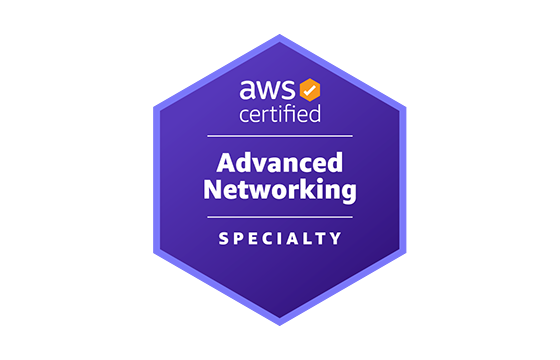



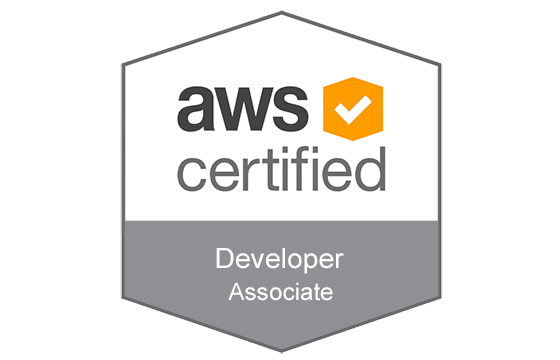
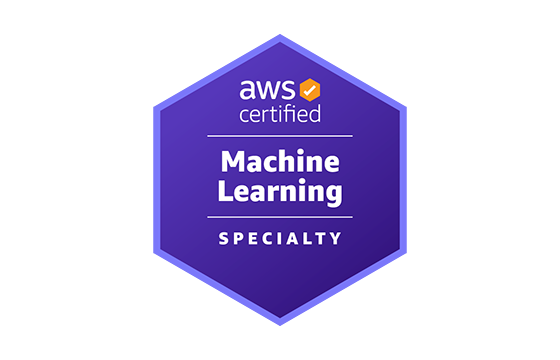

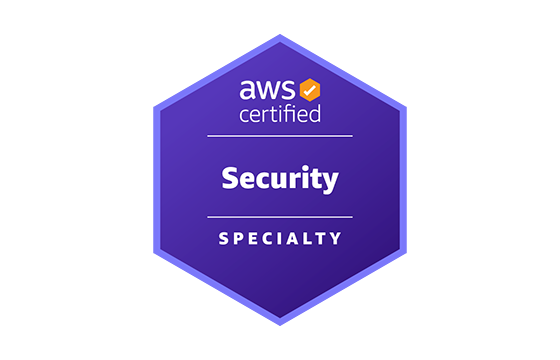
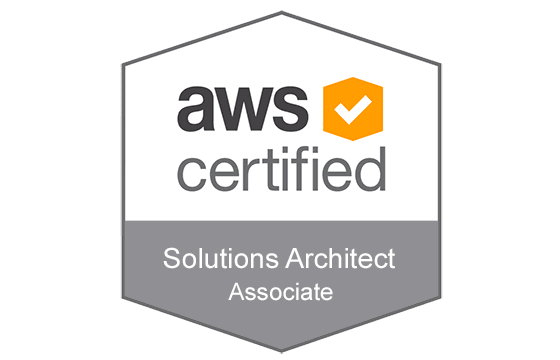
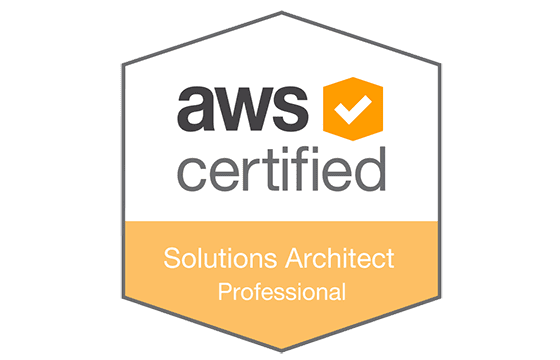
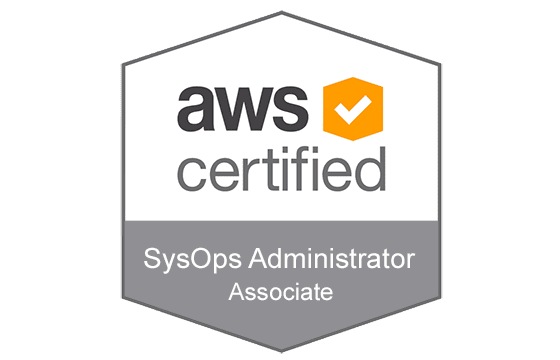
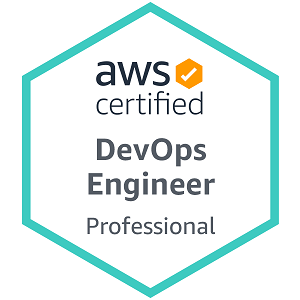



Is the premium still valid as of 7/12/22?
AWS Certified Solutions Architect - Associate (SAA-C02)
Can I know if these questions are topicwise or seggregated??
Cleared my exam. The dumps helped.
The premium file and the other training materials will sure help you to pass this quite difficult exam. So yes the premium file is valid. However do not count on this alone!
Hi friends! Please, could anyone tell me if this premium file is valid for passing the exam? Thanks!
Is this dump valid?
@katherine, AFAIK, these dumps for SAA-C02 assessment are helpful. i guess you need to have a look at them b4 taking the actual exam. believe it or not but they’re comprised of questions which are accurate representative of what you can expect in your assessment even though they are completely free of charge. besides, those tests helped me close out my knowledge gaps and I obtained the Amazon AWS Certified Solutions Architect - Associate certification!!! TY! Exam-Collection!
indeed excellent training resources… not only covers all the info candidates need to study but also provides them with very detailed explanations of the concepts. they helped me a lot in completing my SAA-C02 exam successfully. almost all the concepts which appeared in the actual test are contained in these materials. TYVM Exam-Collection team!!!
hi folks? i’d like to prepare for my assessment using the saa-c02 practice test questions. did you find the questions in them useful? plz answer ASAP?
ppl, i practiced with SAA-C02 questions and TBH they are gr8! they help you assess your understanding of the tested content and prepare well 4 the main exam. with them, you’ll be able 2 understand the concepts well and score a good grade in your first attempt. highly recommend! GJ! exam-collection!
@sheila, IMO, amazon saa-c02 dumps are among the best prep materials available so far in the net for such an exam. i revised for my test using them and found that they cover all exam objectives. for me, most diff concepts were resilient architectures, secure applications &architectures, high-performing architectures, and cost-optimized architectures but with this platform i got the gist of them. HTH!!!!!!
hi lads… i’m searching reliable SAA-C02 dumps… should i opt for Exam-Collection?? TIA!
XOXO!!! i’m very happy for passing my exam in the first try. the SAA-C02 practice test questions offered here are really helpful. i learnt several new concepts by going through these questions which i would’ve not studied otherwise. TYSM! )))))))))
Add Comment
Feel Free to Post Your Comments About EamCollection VCE Files which Include Amazon AWS Certified Solutions Architect - Associate SAA-C02 Exam Dumps, Practice Test Questions & Answers.